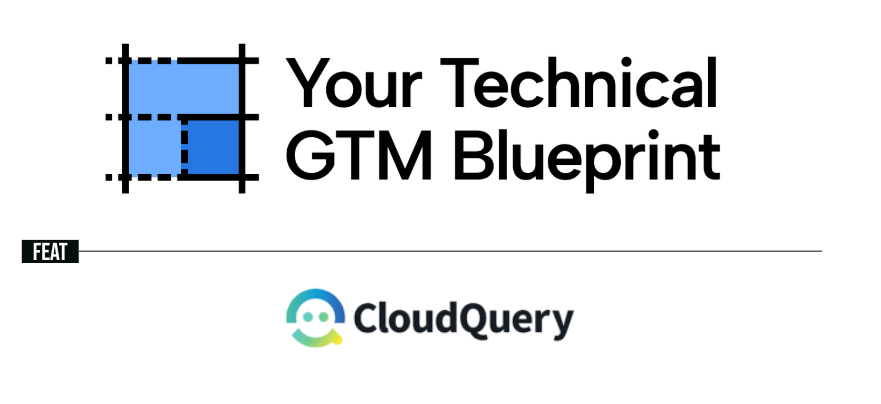Your Technical GTM Blueprint: From Open Source Experimentation to Strategic Monetization with CloudQuery
Welcome to Your Technical GTM Blueprint, a new series dedicated to sharing insights and diving deeply into the strategies, frameworks, and best practices of Technical GTM.
Subscribe now and never miss an issue 🦋
Choosing between open source and closed source remains a critical strategic decision for infrastructure startups. Yevgeny Pats, founder and CEO of CloudQuery, shares candid insights from his experience transitioning his startup from an open-source project to a closed-source model, highlighting the complexities of monetization and market alignment.
Yevgeny founded CloudQuery in 2021, initially envisioning it as an open-source cloud asset inventory and data movement tool primarily targeted at enterprise security teams. At the time, open-source distribution models seemed attractive, offering quicker market entry and rapid user validation without heavy enterprise sales overhead. Inspired by successful open-source companies like HashiCorp and MongoDB, Yevgeny initially saw open source primarily as a distribution strategy.
"Open source seemed like the fastest path to distribution and market feedback," Yevgeny explains. His strategy relied on building adoption first and monetizing later, expecting that widespread use would naturally translate into enterprise revenue.
However, as CloudQuery gained traction, particularly among enterprise users, monetization challenges emerged. Unlike consumer products that benefit from massive user bases and indirect monetization (such as advertising), CloudQuery required direct monetization from fewer, larger enterprise customers. Attempts to monetize through support and an open-core model faced significant hurdles. Users saw immense value in the freely available version, leaving little incentive to upgrade for incremental paid features.
Yevgeny vividly describes the issue: "It was like offering a computer for free and then charging $1,000 for a mouse. Users simply found ways around it or built their own solutions." The incremental open-core model created more confusion than clarity, complicating customer interactions and diluting the company's sales message.
Recognizing these hurdles, Yevgeny decisively transitioned CloudQuery to a fully closed-source model. The transition involved about two months of focused engineering work, including developing licensing mechanisms, implementing trial expirations, and refining distribution processes. Despite initial internal concerns about potential backlash, the transition was smooth, with customers quickly accepting the new reality. "Internally, we feared backlash, but in reality, our customers understood the value and were willing to pay," Yevgeny recalls.
This decisive shift clarified CloudQuery's business model and streamlined sales. The team communicated proactively with existing customers, clearly setting expectations around the transition from free usage to a paid model. Users who attempted to update the software were notified clearly about the new paid licensing, helping drive immediate conversions.
Reflecting on these experiences, Yevgeny emphasizes that open source should primarily serve as a strategic growth lever, not necessarily as a core product. He strongly advises startups, especially those targeting enterprise markets with clear budget allocations, to carefully consider whether open source aligns with their long-term monetization goals.
"Trying to maintain both an open-source project and a commercial product simultaneously can severely distract an early-stage startup," Yevgeny explains. "At the seed stage, companies must clearly choose their battles and focus on what directly drives revenue."
Yevgeny also underscores the role market dynamics played in his strategic decisions. He notes that CloudQuery's initial open-source direction was influenced by market conditions in 2021, which heavily favored adoption metrics. However, as funding environments shifted to emphasize revenue, he swiftly adapted CloudQuery's strategy, recognizing that success hinged on sustainable monetization.
Ultimately, CloudQuery’s move to closed source significantly accelerated revenue generation and clarified its market positioning. Yevgeny's journey demonstrates the importance of flexibility, decisive leadership, and alignment between product strategy and market realities, providing essential lessons for startups navigating the open versus closed-source decision.
You can find more on this topic in Yevgeny’s post on the current state of open source licenses here.
☎️ Call for Startups
Are you a pre-seed technical founder figuring out your initial GTM approach? I'd love to swap notes on early-stage strategies that work. Whether you're still validating product-market fit, landing your first design partners, or setting up your initial sales motion, reach out at priyanka@work-bench.com. Have experiences from your 0-to-1 journey worth sharing? I'm always looking for authentic founder stories to feature in upcoming articles.
Priyanka 🌊
…
I’m a Principal at Work-Bench, a Seed stage enterprise-focused VC fund based in New York City. Our sweet spot for investment at Seed correlates with building out a startup’s early go-to-market motions. In the cloud-native infrastructure and developer tool ecosystem, we’ve invested in companies like Cockroach Labs, Run.house, Prequel, Tern and others.


